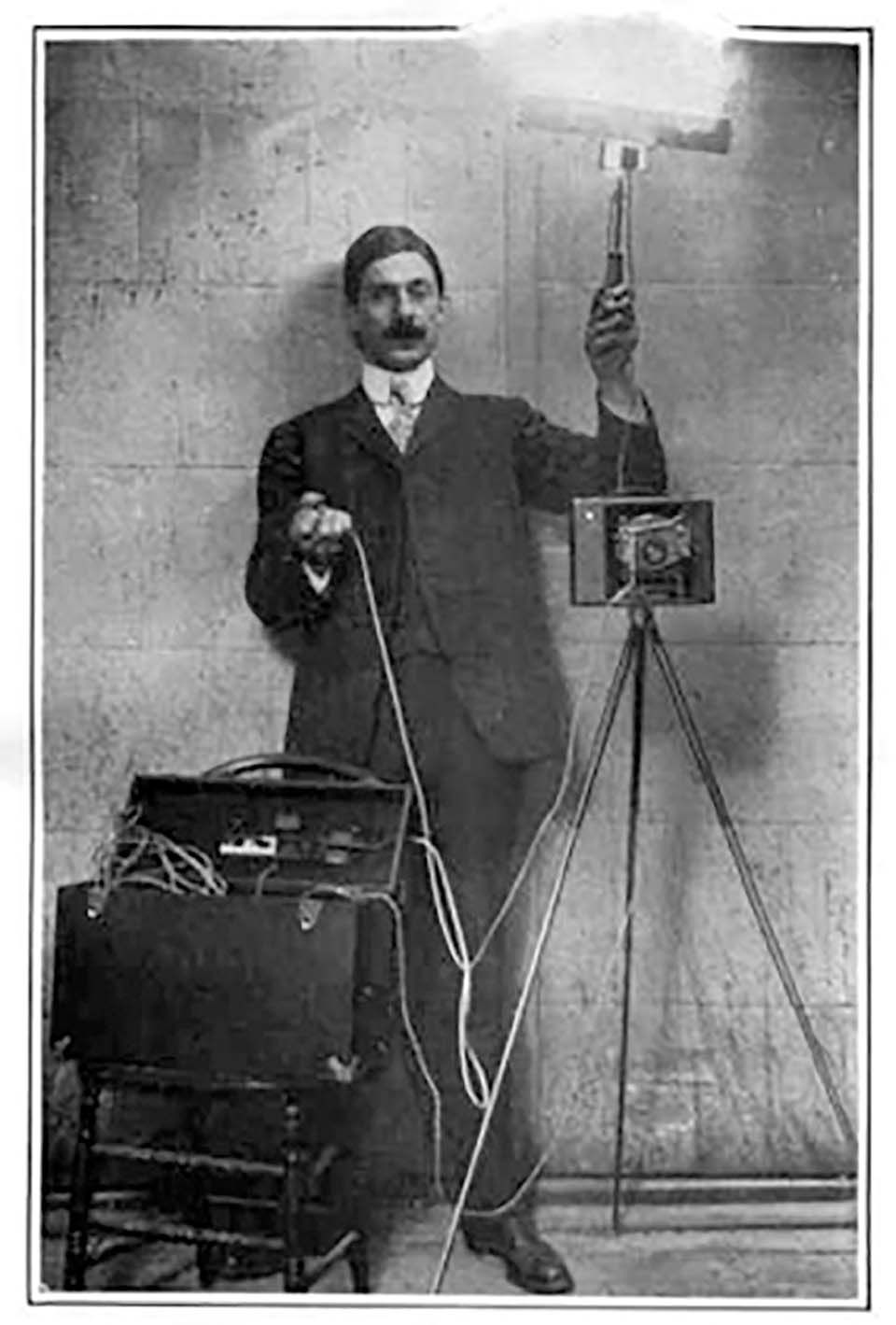
In the early days of photography, the photographers of the day soon worked out they needed more light. Exposure times of several minutes led to blurred photographs. This meant the subject had to stay still for five minutes and more. Look at old photos and you will see the tricks of the trade – the subject is leaning on a table, holding a book or using a walking stick.
At that stage it was illumination by the celestial light technician, until a branch of pyrotechnics came into play. The invention of the flash.
The early flash guns used a mixture of magnesium powder and potassium chlorate that was ignited by hand. Later, magnesium filaments were contained in flash bulbs filled with oxygen, and electrically ignited by a contact in the camera shutter. However, such a bulb could only be used once, and was too hot to handle immediately after use.
Almost every camera these days comes with its own built-in flash. Such technical items as ‘guide numbers’ don’t seem to matter anymore. The camera does it all for you. But there is always a downside. You get what the camera thinks you want – not what you might want.
Take the example where you are shooting indoors at night (always a good time to use extra lighting), but you still want some of the background to show up. Shooting people in a pub is a good example. You want more than just ‘heads’; you want to show just what the pub looked like.
There are several ways to do this. You can use more than one flash (sometimes called ‘slaves’) and they fire when they detect the flash burst from the primary flash, or you can even link them all up with flash cables triggered by the shutter on the camera. You set the slaves to light up the background, while the main flash illuminates the subject. That’s Option One.
Option Two is to use a tripod and the time exposure setting to record the background and then pop the main flash to record the subject in the foreground. Difficult, but possible.
Option Three is the simplest. You have to take the camera out of Auto mode and into manual. Set the camera’s aperture to around f5.6 and the shutter speed to 1/15th of a second. The slow shutter and wide open aperture gives enough light to get the background to show up on film, and the flash burst is enough to record the subject.
Another trick you can do with any camera that has a flash, be that built in or bolted to the top of it, is to throw colour at your subject. The important item of equipment is colored cellophane paper (called ‘gels’ in the industry). Put a blue gel over the flash head and you will get a very ‘cold’ photograph, especially if you are taking pictures of people. Beach shots look like Antarctica. Conversely, put an orange gel over the flash and you will get a wonderfully warm person in the foreground.
To go further, take the flash off the camera, shoot the subject side lit with a colored gel over the flash. Experiment with blue, red, green, orange, yellow – we are not looking to reproduce reality here, we (that’s you) are trying to produce an artistic effect. This can be done post production with Photoshop, but it’s more fun doing it yourself.
Most keen amateur photographers will have heard of the term “Fill-in Flash”. This refers to a reduced output flash burst, used to lighten shadows in harsh daylight, or to illuminate the front of a back-lit subject.
Easy to do and the results with portraiture are good. Reduce the output of the flash so it will gently lighten the shadows and not “blow out” the subject details like a searchlight. The trick is to either diffuse the flash with tracing paper and do not adjust the camera settings, or reduce the flash power setting by two aperture stops below that indicated by the camera. In other words, set the camera on f11 and the flash on f5.6.
 |
 |
 |





